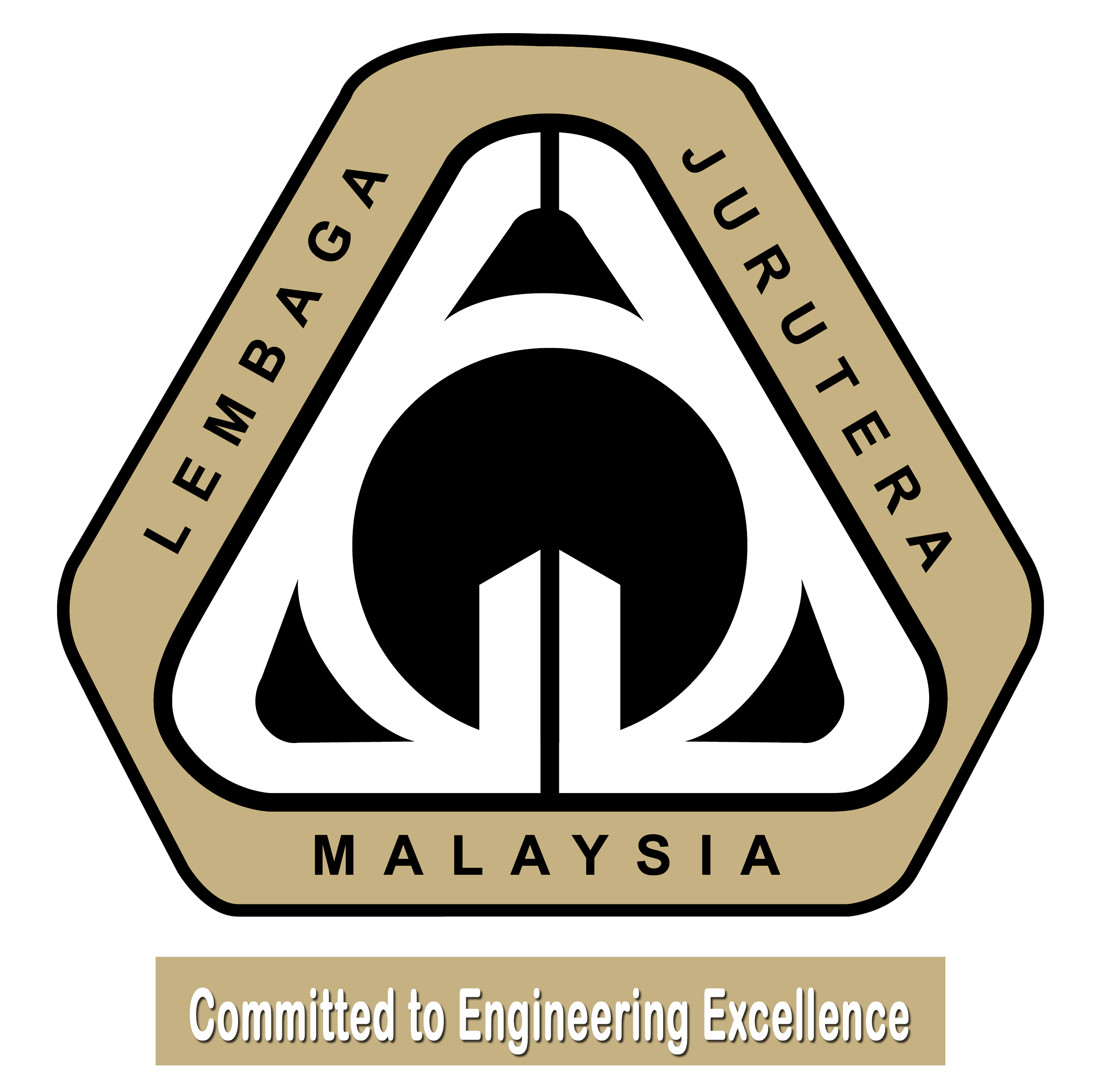GEOTECHNICAL SYLLABUS
The candidates who are sitting for the PCE Geotechnical Engineering are expected to have sufficient knowledge and understanding of the latest relevant Acts, Regulations, By-Laws, Standards, Codes of Practices and good engineering practices in Malaysia. There will be questions set on the application of engineering judgement and solving engineering issues in the local practices of geotechnical engineering including associated structural and civil works.
Geotechnical Engineering Practices in Malaysia
Proficiency, experience and good working knowledge of geotechnical engineering practice in Malaysia covering the syllabus below.
1. GENERAL MATTER
a) Procurement & Contract (Pre and Post) administration
b) Regulatory practice and submission procedure for geotechnical engineers:
(i) “Street, Drainage & Building Act” and the UBBL where it pertains to the engineer as:
· Submitting engineer for foundation works
· Submitting engineer for earthworks
(ii) Earthworks By-Laws
(iii) Submission procedures from development order, building plan and CCC submission for engineers in the capacity as:
· Submitting engineer for foundation works
· Submitting engineer for earthworks
· Submitting engineer for hillsite and sensitive ground assessment
(iv) Environmental Quality Act introductory level only on those sections of the Act (or regulations) dealing with noise, erosion and vibration
c) Understanding of the Eurocode on geotechnical designs ( EC7 & Malaysian Annex)
d) Understanding of soil and rock mechanics
2. GROUND INVESTIGATION WORKS
a) Planning of subsurface investigation fieldworks including sampling, insitu tests and geophysical tests:
(i) For embankment on soft ground
(ii) For cut and fill at hillsite development and roadworks on hilly terrain
(iii) For shallow and deep foundation in soil
(iv) For shallow and deep foundation in rocks
(v) For deep excavation in soil and rock
(vi) For general earthworks and retaining walls
b) Planning of laboratory testing and interpretation of results including insitu tests:
(i) Types of laboratory tests for Items listed in (a)
(ii) Analysis and interpretation of laboratory and insitu test results to obtain soil and rock parameters for Items listed in (a)
c) Dilapidation survey and mapping works
3. SHALLOW AND DEEP FOUNDATION
a) Shallow foundation:
(i) Types of shallow foundation generally used in the industry and the application
(ii) Bearing capacity checks using various equations
(iii) Settlement analysis of shallow foundation
(iv) Structural design and detailing of shallow foundations
(v) Verification of bearing capacity at site
b) Deep foundation:
(i) Types of piles generally used in the industry and the application
(ii) Geotechnical capacity of piles using various methods
(iii) Settlement of piles
(iv) Design of piles for negative skin friction
(v) Lateral capacity of piles
(vi) Lateral deformation of piles
(vii) Pile group analysis and interpretation
(viii) Structural design and detailing of piles including interaction diagrams
(ix) Pile tests and interpretation including instrumented piles
4. SOIL AND ROCK SLOPES
a) Types of instability in soil and rock slopes
b) Factors affecting instability
c) Design considerations:
(i) Short term and long term parameters
(ii) Soil/rock properties for analysis from suitable type of investigation methods:
· Laboratory test
· Field test
(iii) Field mapping:
· Geomorphological mapping (soil and rock slopes)
· Basic understanding of geological mapping works (for rock slopes)
d) Stability analysis:
(i) Soil slopes
(ii) Rock slopes: basic concept and introductory level of kinematic analysis and rockfall simulation
e) Strengthening/remedial methods for soil and rock slopes
f) Slope failure/distress investigation assessment
g) Slope drainage design and requirements
5. GROUND IMPROVEMENT
a) Identification of potential problematic soils and their properties for geotechnical designs:
(i) Soft compressible clay
(ii) Organic soil and peat
(iii) Loose sand deposit
(iv) Landfill
b) Understanding of soil mechanics related to settlement and stability
c) Purpose of ground improvement methods and selection
d) Theory, design and implementation of the following ground improvement techniques:
(i) Preload
(ii) Vibration
(iii) Soil reinforcement
(iv) Deep soil mixing
(v) Drainage
(vi) Light weight fill
(vii) Piled embankment
e) Ground improvement construction process
6. EARTHWORKS AND RETAINING STRUCTURES
a) General earthworks:
(i) Determination of suitable and unsuitable materials
(ii) Compaction requirements
(iii) Construction control of filling and cutting at site
(iv) Erosion, sediment and control plan (ESCP)
(v) Rock excavation and rippability
(vi) Overall drainage requirements
b) Types and selection of retaining structures:
(i) Gravity retaining walls
(ii) Embedded walls
(iii) Strutting and tieback systems
c) Design and construction considerations in retaining structures:
(i) Shear strength
(ii) Groundwater control and drainage systems
(iii) Design of support systems
(iv) Ground movements
(v) Lateral pressure
(vi) Compaction pressures and pressure due to externally applied loads
(vii) Bearing capacity, overturning, sliding, global stability and settlement
(viii) Construction monitoring and inspection
7. DEEP EXCAVATION
a) Types and selection of excavation systems:
(i) Embedded wall types - sheet pile wall, soldier pile wall, diaphragm wall, secant bored pile wall, contiguous bored pile wall and caisson wall
(ii) Support types - cantilevered or unbraced walls, strutted or braced walls, tieback or anchored walls and stabilization berms
b) Design and construction considerations in deep excavation:
(i) Soil and rock design parameters
(ii) Lateral pressures
(iii) Surcharge loadings
(iv) Ground water seepage analysis
(v) Ground water control methods and choice
(vi) Stability of excavations covering passive, hydraulic and basal failure mechanism
(vii) Basic knowledge of numerical analysis including the understanding of the soil models
(viii) Structural design and detailing of wall and internal support systems.
(ix) Design of tiebacks
(x) Construction methods and quality control
(xi) Evaluation of ground movements
8. GEOTECHNICAL INSTRUMENTATION
a) Objectives and benefits of instrumentation
b) Geotechnical instruments for measurement of:
(i) Groundwater pressure
(ii) Movement and deformation
(iii) Load and strain in structural members
c) Design of instrumentation program for:
(i) Unsupported (open) and supported excavations
(ii) Foundation and structures
(iii) Ground improvement
(iv) Tunneling
d) Other important issues:
(i) Frequency of monitoring
(ii) Threshold values and action plan
(iii) Calibration of instruments
(iv) Interpretation of monitoring results
(v) Protection and maintenance





















